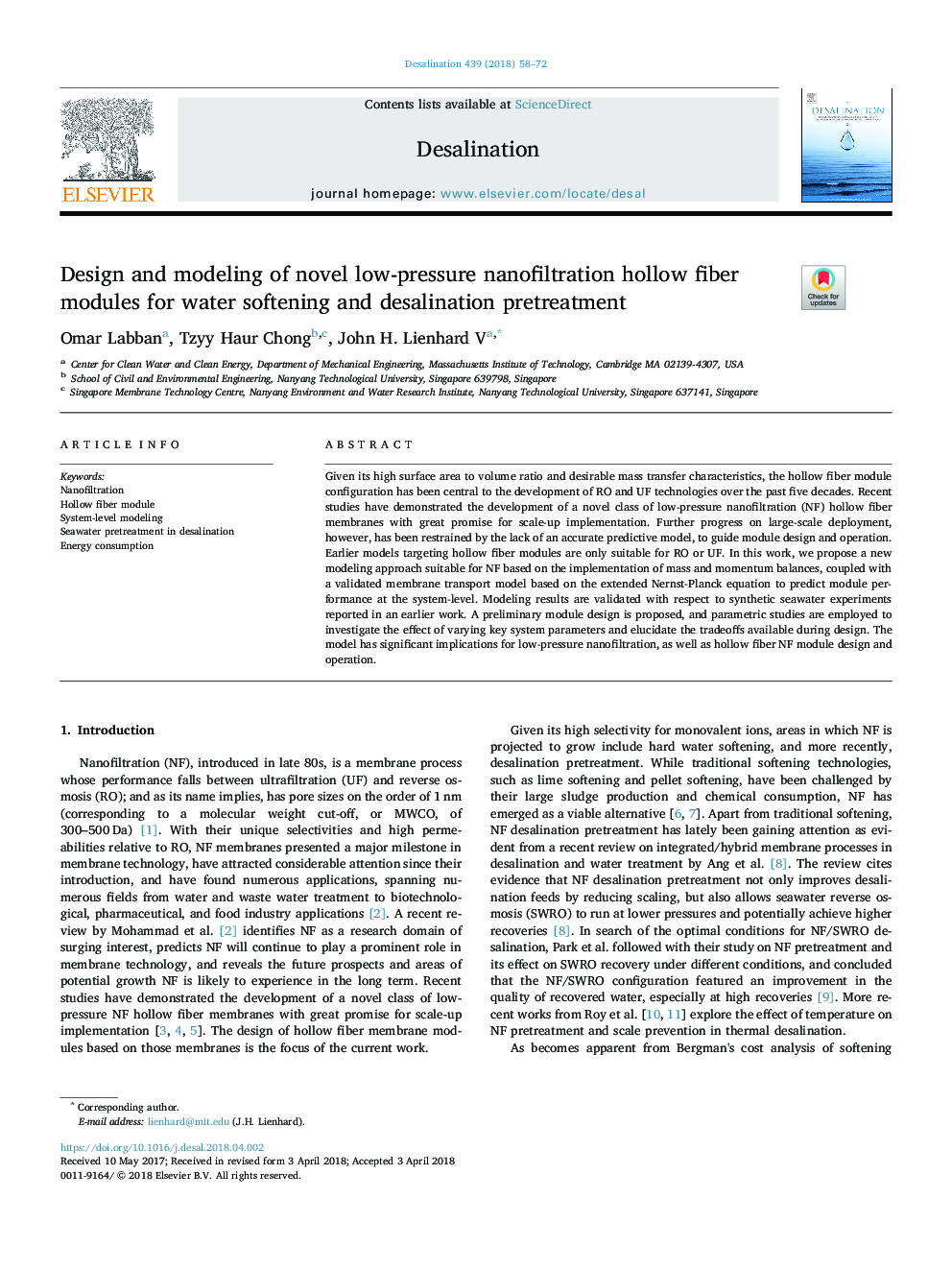| Article ID | Journal | Published Year | Pages | File Type |
|---|---|---|---|---|
| 7007797 | Desalination | 2018 | 15 Pages |
Abstract
Given its high surface area to volume ratio and desirable mass transfer characteristics, the hollow fiber module configuration has been central to the development of RO and UF technologies over the past five decades. Recent studies have demonstrated the development of a novel class of low-pressure nanofiltration (NF) hollow fiber membranes with great promise for scale-up implementation. Further progress on large-scale deployment, however, has been restrained by the lack of an accurate predictive model, to guide module design and operation. Earlier models targeting hollow fiber modules are only suitable for RO or UF. In this work, we propose a new modeling approach suitable for NF based on the implementation of mass and momentum balances, coupled with a validated membrane transport model based on the extended Nernst-Planck equation to predict module performance at the system-level. Modeling results are validated with respect to synthetic seawater experiments reported in an earlier work. A preliminary module design is proposed, and parametric studies are employed to investigate the effect of varying key system parameters and elucidate the tradeoffs available during design. The model has significant implications for low-pressure nanofiltration, as well as hollow fiber NF module design and operation.
Related Topics
Physical Sciences and Engineering
Chemical Engineering
Filtration and Separation
Authors
Omar Labban, Tzyy Haur Chong, John H. V,
